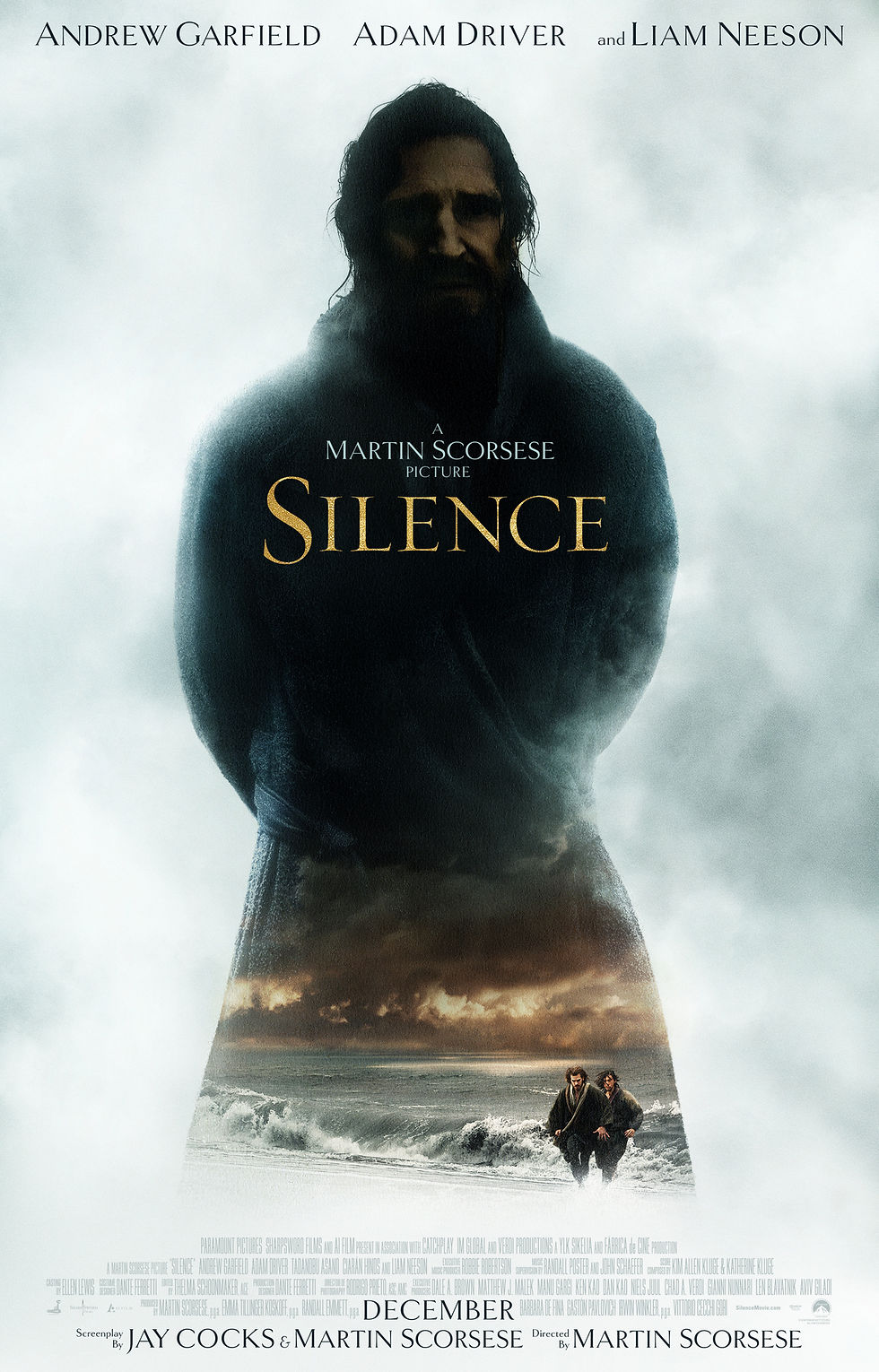"Silence" Review
- Jack Salvadori
- Nov 30, 2016
- 3 min read
Sometimes, silence can be the most powerful scream.

This is the case for Martin Scorsese’s latest motion picture, in which silence figuratively expresses the real essence of the film. Developing this project in his mind for over 25 years, the legendary director has recently released what I consider to be his most powerful, self-reflective, and personal masterpiece. Behind the extensively protracted production of this movie, lies Scorsese’s reluctance in embracing such an influential story– an outright spiritual journey. Raised in a strictly catholic environment, the American iconic director always had a special reverence towards religion, humbly asserting it in the majority of his works. However, in Silence, the director does not employ faith to enrich the allusions and implications of his films, but rather he openly questions it, in a way that could seem disrespectful and hypocritical towards his mystical belief.
One of the main characteristics of the film is its lack of soundtrack, echoing the title’s significance. A cinematic silence that unequivocally joins and mirrors the main theme of the motion picture: the silence left by God. A silence that Father Rodrigues – a 17th century, young Jesuit priest sent to Japan in search for his mentor – struggles with, and refuses to accept. Alternating astonishing exotic panoramas to harsh, violent torture sequences, the movie indulges in deep philosophical reflections about the figure of God, his indifference towards human beings, and his diversity among other cultures; a God that assumes many shapes, that embodies the concepts of vanity, of redemption, of sacrifice and of salvation, while manifesting his omnipotence through the perpetuating silence. Father Rodrigues identifies himself with Jesus Christ because of the agony that they both had to suffer in their lives in order to spread the Christian faith, resulting in a form of narcissism. At the same time, the Japanese people that embrace the Catholicism brought by the missionaries, are actually gripping to their only glimpse of hope, merely conceiving God as a material advantage rather than a spiritual entity. Therefore, Silence, rather than being a film questioning religion, is more a reflection upon the human interpretations of it.
It traces the steps of Apocalypse Now (1979), presenting a “soldier” in a hostile Asiatic location in search of an obscure mentor who has abandoned his ideology, embracing the enemy’s, and constructing a mystical aura around his persona. The “colonel Kurtz” of Silence is Father Ferreira, played by a charming Liam Neeson, a disenchanted priest that apostatised in favour of Buddhism. For Rodrigues, Ferreira used to be a pillar, the personification of faith, and his apostasy inevitably crumbles the young priest’s belief. Scorsese’s choice of casting Neeson is not casual, of course, because during his career, the actor has already portrayed the figure of a strong, righteous priest, both in Scorsese’s Gangs of New York (2002) and in Mission (1986), as a missionary who prefers to die rather than renounce to God. Therefore, Scorsese was confident that Neeson would have been a familiar, ‘trusted’ priest for the majority of the viewers. Just as Sergio Leone did in Once Upon a Time in the West (1968) with actor Henry Fonda, Scorsese reversed the archetype, from positive to negative, from staunch to unfaithful, generating a sense of confusion in the audience, that parallels Father Rodrigues’ chaotic uncertainties.
Another interesting characteristic to consider, is that Silence follows what I like to call the “Scorsese pattern”: a very detailed, slow opening, that in its greatness does not necessarily drive the plot forward, focusing more on shaping the characters, and an extremely quick ending, that summarizes lengthy periods of time, often several years, in a few minutes. Moreover, the protagonist starts from nothing, throughout the film he reaches his peak, and then he dramatically falls down, in an unsatisfying dissolution. This pattern can be seen in most of the director’s films, such as Goodfellas, Raging Bull, The Wolf of Wall Street and Casino. In the end, the disenchanted protagonists don’t necessarily lose everything, but they are far from the pedestal where they used to reside, now nostalgically conformed to normality. In my opinion, Silence deserves to be remembered among the director’s greatest accomplishments. In this occasion, he exploits cinema to explore his intimate inquietudes on religion, and if Scorsese considers cinema sacred, almost a religion itself, he definitively managed to became its patron saint.
4/5



Comments